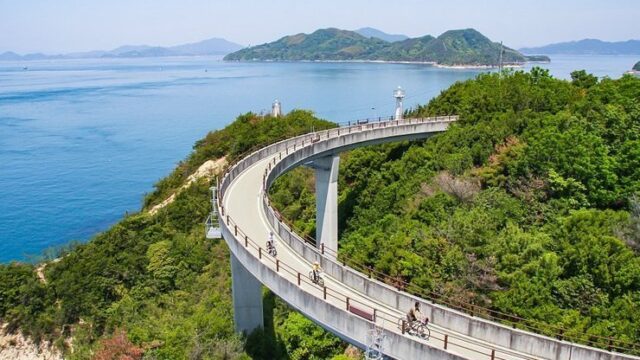Hiroshima’s natural draws are the Seto Inland Sea, forested mountains and pristine waters. These are additional perks for visitors exploring the prefecture’s peace connection, shrines and museums
The city of Hiroshima is a great place for trekking through dense forests and enjoying natural hot springs. Discover quaint towns like Onomichi and Tomonoura or enjoy golden beaches, the islands of the Seto Inland Sea, and the iconic Itsukushima on Miyajima—the floating shrine with a red gate set in the sea. Hiroshima’s other World Cultural Heritage site, the Atomic Bomb Dome, and its surrounding memorial park are monuments to peace. Hiroshima is also famous for savory okonomiyaki pancakes, anago or saltwater eel, and other culinary delights. Hiking, cycling, ocean sports, and skiing are all popular outdoor activities.
How to Get There
Hiroshima is easily accessible via the JR Tokaido-Sanyo Shinkansen from Tokyo, Osaka, Nagoya, Kyoto, and Fukuoka in the other direction. It is also served by domestic and international flights to Hiroshima International Airport, local trains from and highway bus services.
Meanwhile, Hiroshima International Airport has direct flights to and from Taipei, Hong Kong, Singapore, Shanghai, Dalian and Seoul. A limousine bus from the airport takes less than an hour to reach the city center.
Hiroshima’s natural draws are the Seto Inland Sea, forested mountains and pristine waters. These are additional perks for visitors exploring the prefecture’s peace connection, shrines and museums

Don’t Miss
• The memorial Peace Park is home to countless memorials and the iconic Atomic Bomb Dome
• Miyajima with its floating red torii gate that serves as the entrance to Itsukushima
• Takehara, or “Little Kyoto,” with its historic buildings, interesting museums and great sake
• Kure—the city that built the legendary battleship Yamato—and its museum



